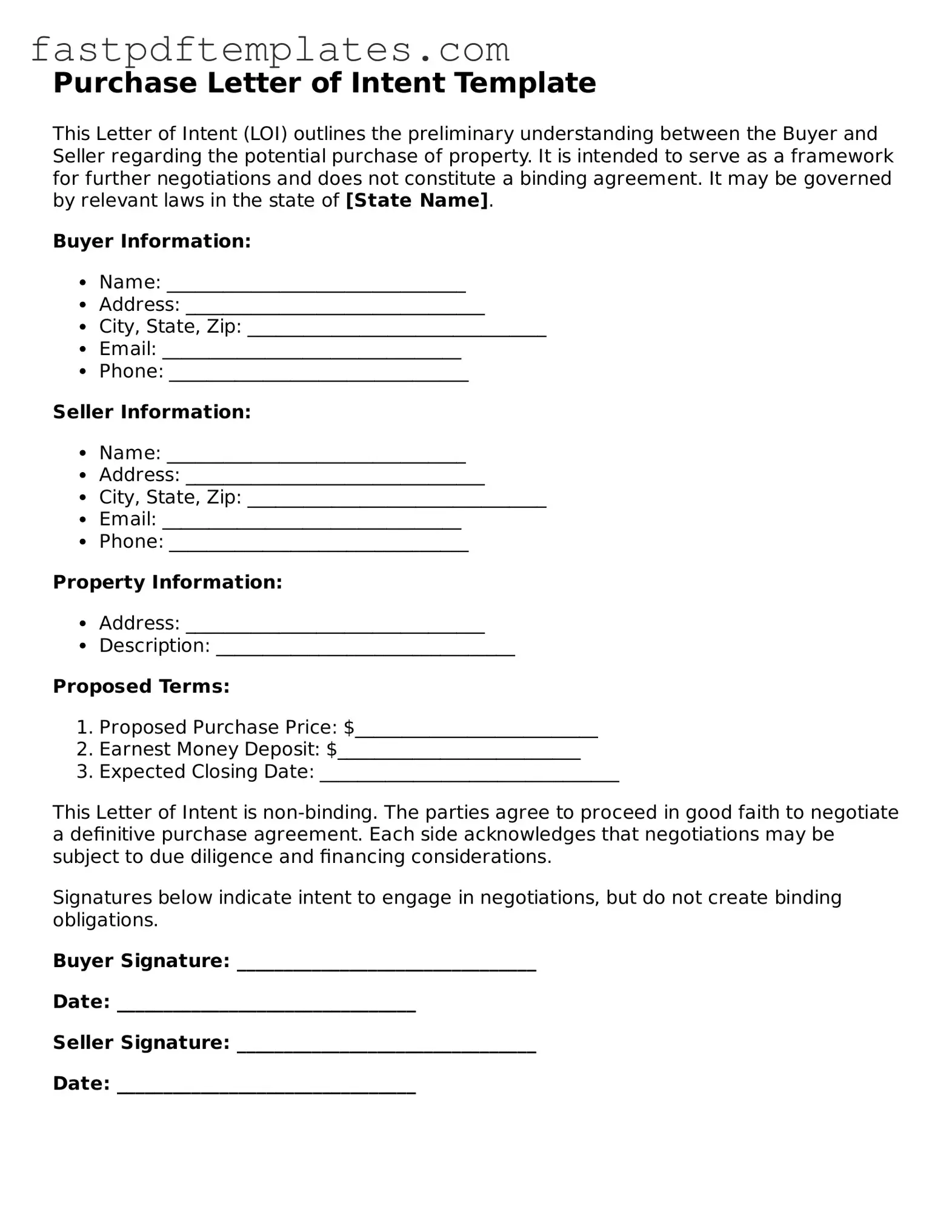Purchase Letter of Intent Template
This Letter of Intent (LOI) outlines the preliminary understanding between the Buyer and Seller regarding the potential purchase of property. It is intended to serve as a framework for further negotiations and does not constitute a binding agreement. It may be governed by relevant laws in the state of [State Name].
Buyer Information:
- Name: ________________________________
- Address: ________________________________
- City, State, Zip: ________________________________
- Email: ________________________________
- Phone: ________________________________
Seller Information:
- Name: ________________________________
- Address: ________________________________
- City, State, Zip: ________________________________
- Email: ________________________________
- Phone: ________________________________
Property Information:
- Address: ________________________________
- Description: ________________________________
Proposed Terms:
- Proposed Purchase Price: $__________________________
- Earnest Money Deposit: $__________________________
- Expected Closing Date: ________________________________
This Letter of Intent is non-binding. The parties agree to proceed in good faith to negotiate a definitive purchase agreement. Each side acknowledges that negotiations may be subject to due diligence and financing considerations.
Signatures below indicate intent to engage in negotiations, but do not create binding obligations.
Buyer Signature: ________________________________
Date: ________________________________
Seller Signature: ________________________________
Date: ________________________________
